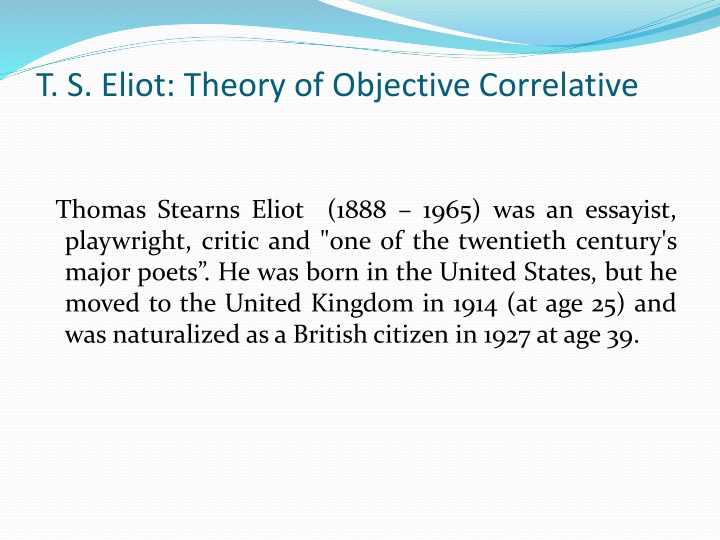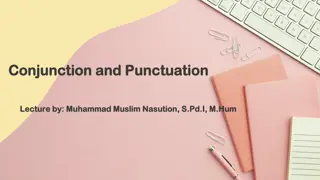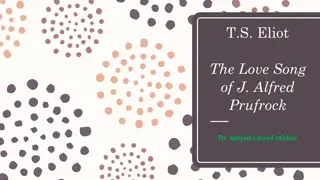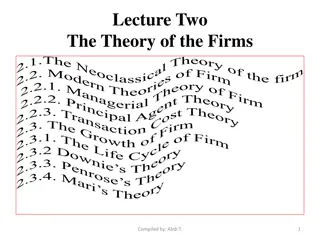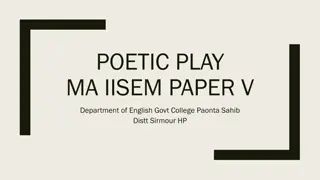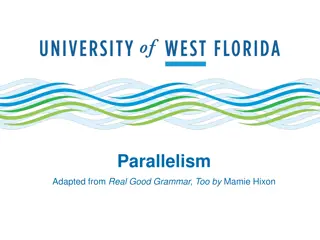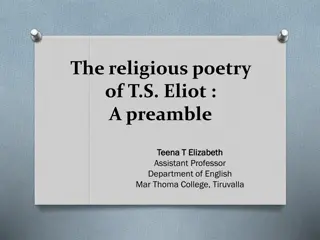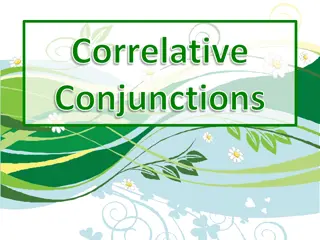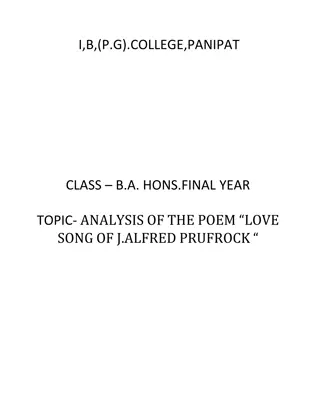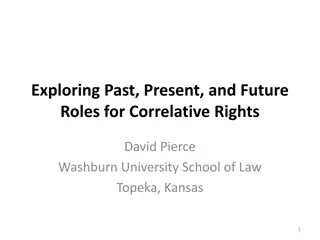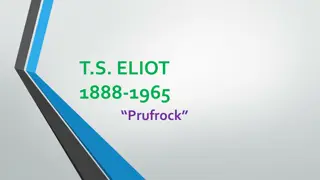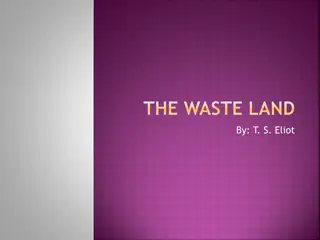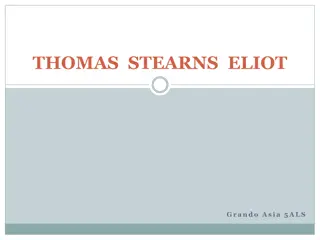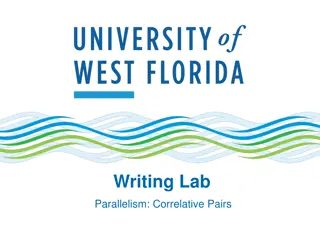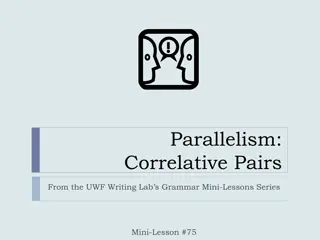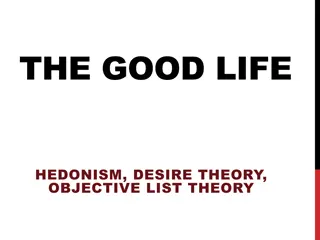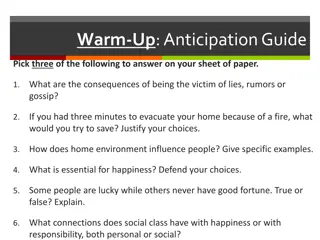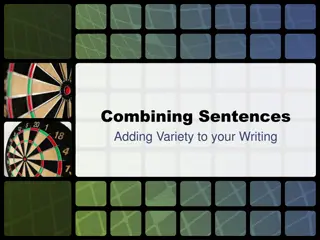T.S. Eliot and the Objective Correlative Theory
Thomas Stearns Eliot, a major poet of the 20th century, introduced the concept of the objective correlative, emphasizing the use of external elements to evoke specific emotions in poetry. In opposition to Romantic ideals of self-expression in poetry, Eliot believed in an impersonal approach, utilizing a set of objects or events to convey emotions effectively. This theory is discussed in his essay "Hamlet and His Problems" from the book "The Sacred Wood: Essays on Poetry and Criticism."
Download Presentation

Please find below an Image/Link to download the presentation.
The content on the website is provided AS IS for your information and personal use only. It may not be sold, licensed, or shared on other websites without obtaining consent from the author.If you encounter any issues during the download, it is possible that the publisher has removed the file from their server.
You are allowed to download the files provided on this website for personal or commercial use, subject to the condition that they are used lawfully. All files are the property of their respective owners.
The content on the website is provided AS IS for your information and personal use only. It may not be sold, licensed, or shared on other websites without obtaining consent from the author.
E N D
Presentation Transcript
T. S. Eliot: Theory of Objective Correlative Thomas Stearns Eliot (1888 1965) was an essayist, playwright, critic and "one of the twentieth century's major poets . He was born in the United States, but he moved to the United Kingdom in 1914 (at age 25) and was naturalized as a British citizen in 1927 at age 39.
Eliot and the Romantic Tradition The Romantics believed that poetry is an expression of the self. The best poets are those who express themselvesas directlyand personallyas possible. Eliot puts himself in opposition to this theory and called for an impersonal method of writing poetry. For him poetry is not an expression of the self but an escape from it. Eliot sees that the only way to express emotions in literature is through the useof objectivecorrelative.
What is the Objective ? The objective correlative is : a set of objects, a situation, a chain of events which shall be the formula of that particular emotion; such that when the external facts, which must terminate in sensory experience, are given, the emotion is immediately evoked.
Theory of the objective correlative T.S. Eliot developed his theory of objective correlative in his essay Hamlet and His Problems in his book The Sacred Wood: Essays on Poetry and Criticism. In this book he discusses his view of Shakespeare s incomplete development of Hamlet s emotions. In this essay, Eliot states: The artistic inevitability lies in this complete adequacy of the external to the emotion . . According to Eliot, the feelings of Hamlet are not sufficiently supported by the story and the other characters surrounding him. The objective correlative s purpose is to express the character s emotions by showing rather than describing feelings as pictured earlier by Plato.
